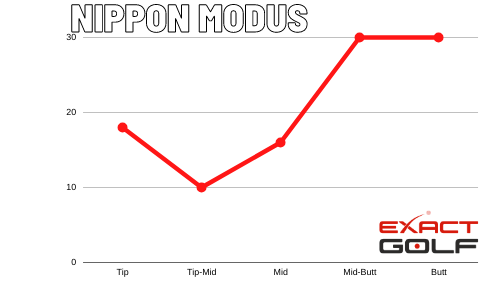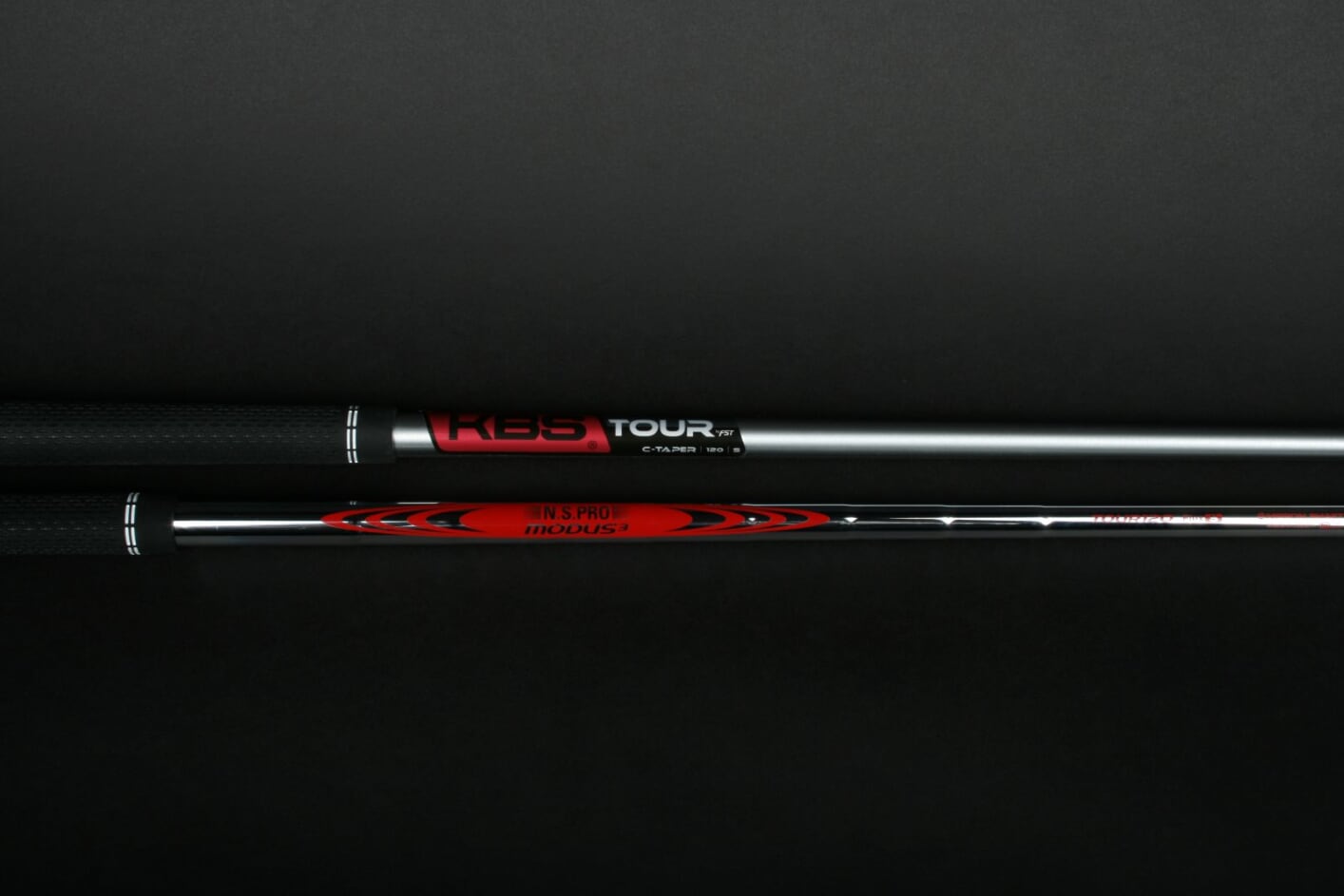Fitting with low launch, low spin shafts: Modus 120, Project X and C-Taper
In this fitting we were dealing with a player who was already looking for a low-launch, low-spin shaft. For him it was important to have maximum control in the lower part of the shaft. This is exactly what these shafts bring with them and have a "stiff tip": Modus 120 in X, C-Taper 120 in S and Project X 6.0. Normally, shafts become softer and softer from end to tip as the diameter of the shaft decreases. However, modern technologies allow for stiffer elements even with thinner diameters. This is exactly what makes shafts so interesting nowadays: there are countless profiles and every shaft is different.
For this player we chose comparatively "soft" shafts as this was explicitly desired. However, all three shafts are well comparable in terms of stiffness and in the category "typical stiff shaft". Soft shafts with a hard tip are no longer a contradiction and the best known advocate of this concept is Modus 120, because this shaft is particularly soft in the middle section but becomes increasingly stiffer in the tip. This makes the shaft feel relatively soft, but allows maximum control and delivers a low spin, low launch profile. It is not for nothing that the Nippon Modus 120 is one of the most winning shafts on all tours worldwide.
Bend profile comparison
If one takes a look at the bend profiles of the individual shafts, it becomes clear that the differences are small but do exist. While the Nippon Modus 120 certainly has the "most extreme" profile, i.e. with strong deflections, the profile of the Project X is somewhat less extreme. And that of the C-Taper is a bit more straightforward. The C-Taper is also the stiffer shaft because it has a much stiffer mid section.
Below you can see the approximate bending profiles of the shafts in comparison:



Decision for one of the shafts
Our player knows that he wants a shaft that feels soft and has a stiff tip, but he doesn't know which shaft he likes best. A look at the pure values does not reveal too many differences in terms of launch and spin. At best, you could say that the Modus launches a bit higher than the Project X and C-Taper. But the spin is practically identical.

Our player found it a bit easier to accelerate the C-Taper - hence a slightly higher club head speed. On the other hand the strike pattern with the C-Taper was pretty bad. This was best for Project X, which is why the Smash Factor is the highest. Nevertheless, the choice fell on Modus 120 and there are three good reasons for this:
The good hits produced exactly the desired trajectory with a nice draw to the finish. The feeling with the shaft was the most pleasant for the player. With relatively little effort, decent values could be achieved. And an equally important reason is the fact that our player was best able to stop his typical bad shot. This bad shot is a slightly too closed club face and a long pull that misses the green on the left. As can be seen in the overview, this was not the case with Project X, for example. The dispersion with the Modus was minimal and even without balls that went long and left past the flag.
Conclusion: Modus 120 vs. Project X vs. C-Taper
Such a fitting is a lot of fun. A player already has certain expectations on a shaft and wants to find the perfect one. He has three high-quality shafts with a similar profile at his disposal. All three produce very similar values but with different output. The main thing is to work out and optimise the minimal differences. This is very individual. Another player might have come to a completely different result in this test.
If you fluctuate between these shafts and need help in making a decision, the following take-aways might help: The Modus 120 is very soft even as an X and therefore also softer than Project X 6.0 and C-Taper S. In regards to the bend profile the Modus is most "extreme". If you want a soft feel with a stiff tip and want as much feedback as possible in the grip area, the Modus is probably the best choice. The C-Taper on the other hand is much more "neutral" and does not have such a soft mid section.
Take a look at our iron selection where all three shafts can be selected.

KBS $-Taper vs. Modus 120
The KBS $-Taper is a shaft that also belongs to the low launch, low spin shafts and is an option in some fittings. In this test we compare the $-Taper 120 in Stiff with the Modus 120 X. And even though we already choose S and X as flex here, the comparison is not entirely fair. Because the $-Taper is a lot stiffer than the Modus 120 as you can also see here in our iron shaft comparison.
The Nippon Modus 120 is very soft in the middle part and only gets stiff at the tip again. However, this is exactly what gives the soft feel, but still allows control and a low launch. The KBS $-Taper, on the other hand, is much more neutral when it comes to profile - without any big outliers in one direction or the other.

It didn't take long for our player to feel this difference. For him, it was much more relaxed and easier to swing the Modus and the results were also much more accurate. With the $-Taper, our player felt he had to invest more to achieve the same result. Hence a slightly higher club head speed and yet less ball speed. The hit pattern was a little less clean with the $-Taper.
If you look at launch and spin, you will notice that the differences are practically non-existent. The main difference with these shafts is clearly the stiffness. The Modus 120 is an ideal shaft for players who want a high shaft weight but a soft shaft. The $-Taper embodies rather the opposite. For only 120g, it is extremely stiff and can easily keep up with the current 130g shafts in this respect.
